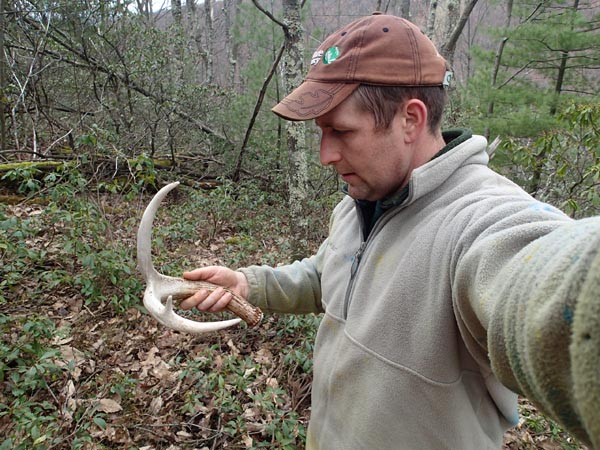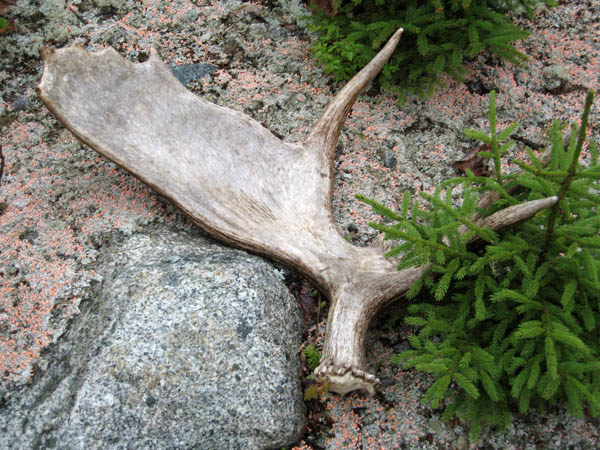Moose lose their antlers in winter due to dropping hormone levels, triggering shedding. This process is natural and cyclical, allowing new antlers to grow.
Moose are known for their impressive antlers, which they shed annually as part of a unique process. Understanding why and how moose lose their antlers can offer insights into their biology and behavior. From the growth of velvet covering the antlers to the shedding process, there is much to learn about this fascinating aspect of moose life.
Tracking these changes can provide valuable information for researchers studying these majestic creatures in the wild. Let’s explore the reasons behind why moose lose their antlers and the significance of this cycle in their lives.

Credit: blog.nature.org
The Antler Shedding Process
Moose lose their antlers every year in a fascinating process known as the annual shedding cycle. This process is essential for their health and survival.
Factors Affecting Shedding
- Age of the moose
- Nutritional factors
- Hormonal changes
- Environmental conditions

Credit: blog.nature.org
Antler Growth And Development
Rapid Growth Phase
During the rapid growth phase, antlers can grow up to an inch per day due to high levels of testosterone.
Formation Of Velvet
Velvet forms around antlers, supplying nutrients for rapid growth and protecting the developing antlers.
The Role Of Hormones
Moose are well-known for their impressive antlers, which can reach widths of up to six feet. But have you ever wondered why and how moose lose their antlers? One fascinating aspect of this process is the crucial role played by hormones. Hormones, particularly testosterone, and other hormonal influences, govern the shedding and regrowth of moose antlers.
Impact Of Testosterone
Testosterone is a key hormone in the antler cycle of moose. As testosterone levels decrease at the end of the breeding season, it triggers the process of antler shedding. This decline in testosterone signals the body to reabsorb the bony tissue that attaches the antlers to the moose’s skull. As a result, the antlers become weak and eventually fall off, allowing new growth to begin. This hormonal shift facilitates energy conservation for the moose, as nurturing and protecting the antlers is no longer necessary after the mating season.
Other Hormonal Influences
Aside from testosterone, other hormones such as prolactin and growth hormone also play crucial roles. Prolactin levels rise during the antler growth phase, stimulating the development of the velvet around the antlers. Once the velvet dries and falls off, signaling the end of antler growth, the moose’s growth hormone levels peak. This sends a signal for the mineralization of the antlers, completing the cycle.
Behavioral Changes During Shedding
During the shedding of their antlers, moose undergo certain behavioral changes that are influenced by their mating patterns, aggression levels, and social dynamics. Understanding these changes can give us insight into their lives and the reasons behind their behaviors. In this article, we will delve into the behavioral changes observed in moose during the shedding process.
Mating And Aggression
As moose shed their antlers, their reproductive behaviors and aggression levels undergo noticeable transformations. Males typically shed their antlers after the rutting season, which is the period of intense competition among males for mating opportunities. The shedding of antlers serves as a signal to other males that the individual is no longer a direct threat.
This behavioral change during shedding plays a crucial role in the mating dynamics of moose. With the loss of their antlers, males no longer have the physical means to engage in fights and assert dominance over other males. Consequently, they shift their focus towards recovery and regaining strength for future mating seasons.
Without antlers, male moose become more cautious and conservative, avoiding unnecessary confrontations and conserving energy for survival. This shift in behavior allows them to redirect their energy from aggression towards replenishing their bodies and preparing for reproduction. This change is essential to ensure the long-term survival and reproductive success of the species.
Social Dynamics
The shedding of antlers also affects the social dynamics among moose, especially within herds. In male-dominated moose social groups, hierarchical structures are often established based on the size and condition of antlers. When males shed their antlers, the social dynamics within the herd can undergo notable changes as the previously dominant individuals may lose their status temporarily.
This temporary disruption in social dynamics during shedding gives other males an opportunity to establish their dominance within the group. However, once the males start regrowing their antlers, the social hierarchy often stabilizes, with the strongest individuals regaining their positions of dominance.
Female moose, on the other hand, generally do not engage in aggressive behaviors or establish dominance based on antler size. However, the shedding of antlers still influences their social interactions. During the shedding process, female moose may become more tolerant towards males, as they are no longer perceived as a direct threat to their safety.
This reshuffling of social dynamics during the shedding process allows for the exchange of genetic material. It creates an opportunity for males who were previously overlooked to mate with receptive females, ultimately leading to genetic diversity within the population.
Throughout the shedding of their antlers, moose experience significant shifts in their mating patterns, aggression levels, and social dynamics. By shedding their antlers, male moose adapt their behavior to the changing needs of their bodies, allowing them to focus on recovery and future mating opportunities. Additionally, shedding influences the social interactions among moose, enabling a reshuffling of dominance and facilitating genetic diversity within the population.
Human Impacts And Conservation
When it comes to moose and their antlers, human impacts and conservation efforts play a crucial role. Hunting and antler collection, as well as ongoing conservation efforts, have significant effects on moose populations. Let’s take a closer look at these factors:
Hunting And Antler Collection
Hunting is a prevalent activity in many regions where moose populations exist. While hunting can be regulated to maintain sustainable populations, it can still have an impact on moose antlers. Many hunters target male moose specifically for their impressive antlers. This selective hunting can result in decreased genetic diversity within the population, as individuals with the largest antlers are removed.
In addition to hunting, antler collection by humans also affects moose populations. Antlers are highly valued for their beauty and uniqueness. They are often collected as trophies or used in various crafts and decorations. The demand for antlers can lead to increased pressure on moose populations, especially when collected indiscriminately without considering the impacts on the overall ecosystem.
Conservation Efforts
Recognizing the importance of moose and their antlers in the ecosystem, various conservation efforts have been undertaken to protect these majestic creatures. Conservation organizations and wildlife management agencies work together to monitor moose populations, establish sustainable hunting practices, and promote habitat conservation.
Conservation efforts aim to strike a balance between preserving moose populations and allowing sustainable use of their resources. This involves setting hunting quotas based on scientific data to prevent overharvesting and to ensure the long-term survival of these magnificent animals.
Furthermore, education and awareness programs are implemented to educate the public about the ecological significance of moose and the importance of responsible hunting practices. By fostering understanding and respect for these animals, conservation efforts seek to minimize the negative human impacts on moose populations.
Overall, it is essential to prioritize the conservation of moose populations and their antlers. Through regulated hunting practices and ongoing conservation efforts, we can ensure the long-term sustainability of these magnificent creatures while still appreciating the beauty and wonder of their impressive antlers.

Credit: daily.jstor.org
Frequently Asked Questions For Moose Lose Their Antlers
Why Do Moose Lose Their Antlers?
Moose lose their antlers to prepare for the breeding season. Shedding antlers allows them to conserve energy and seek mates more effectively.
When Do Moose Typically Lose Their Antlers?
Moose typically shed their antlers in late winter or early spring. This timing is influenced by factors such as hormone levels and the availability of food.
How Long Does It Take For Moose Antlers To Regrow?
It takes moose several months to regrow their antlers. The process begins soon after shedding and can take anywhere from 3 to 5 months for complete regrowth.
Do All Moose Lose Their Antlers?
Yes, all moose, including both males and females, lose their antlers every year. However, male moose typically have larger and more elaborate antlers.
Conclusion
In the wild, the process of moose shedding their antlers offers an intriguing glimpse into nature’s cycles. Understanding the reasons behind this behavior enables us to appreciate the marvels of the animal kingdom. As we witness moose lose their antlers, we gain a deeper understanding of their daily lives and the natural world around us.



